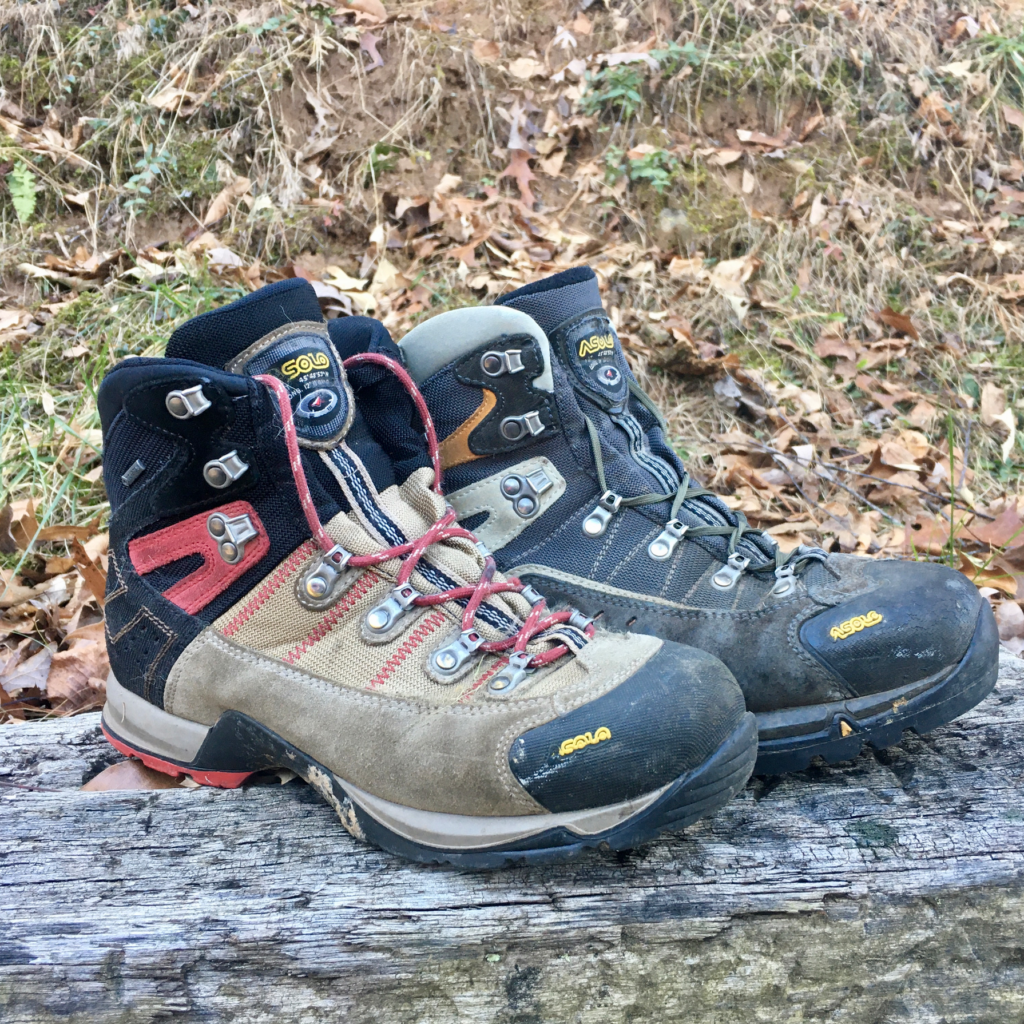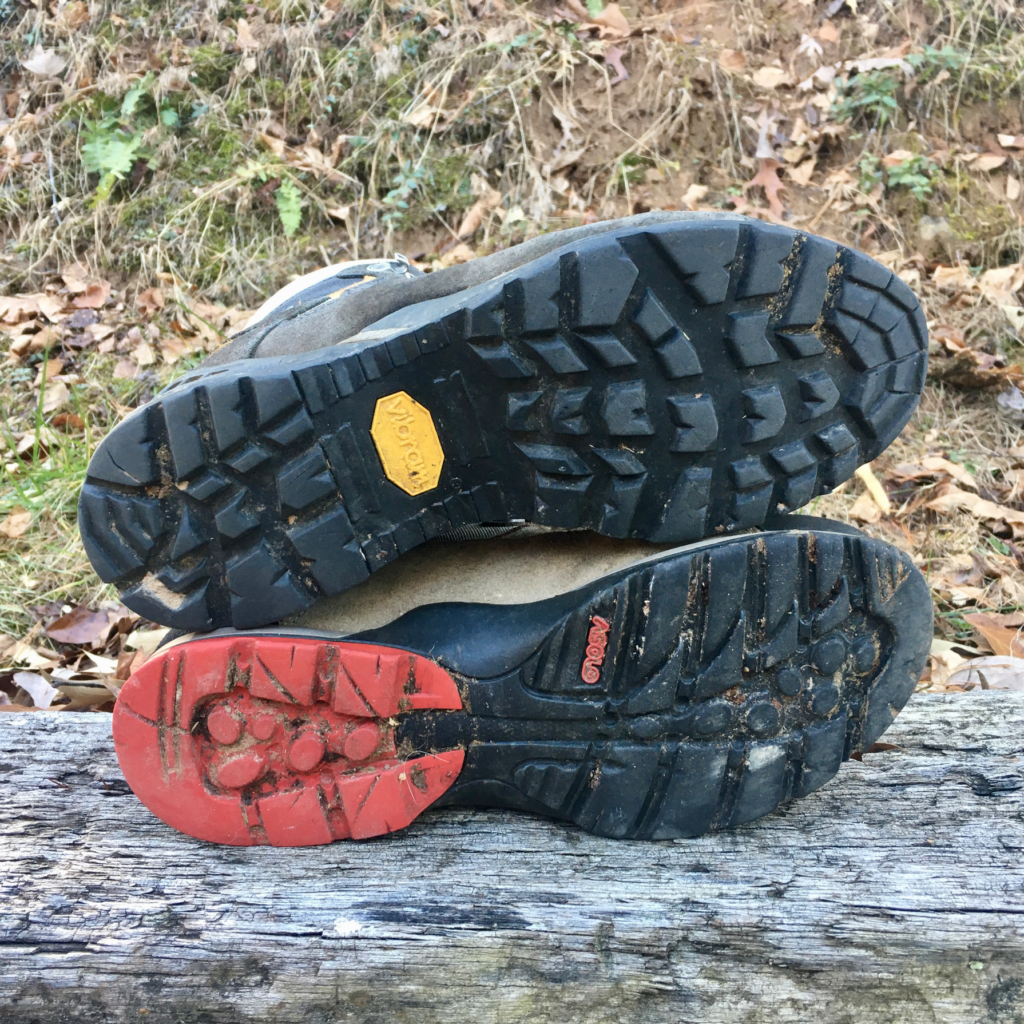A reader recently wrote in asking for a review of Asolo boots. I have a fairly rich history with Asolo boots and I would love to talk about them. A couple disclaimer notes before I begin…
I’m going to let you know right up front: as you will see, I am a huge fan of Asolo boots. I am NOT the best source of unbiased information – just wanted to get that out of the way. You should also know that I have no idea how to review boots. If you’re looking for a lot of technical information, leave now, and go find an actual shoe review site because this ain’t it.
Asolos and Me
My first pair of Asolo boots was purchased in late 2006, just prior to my first Afghanistan deployment. The boots were the Asolo FSN 95 GTX which, to my knowledge, isn’t made any longer. The FSN 95s were an OK pair of boots but they had one major strike against them: the sole. The sole had very little traction. On any kind of damp surface (i.e. wet rocks or the ramp of a helo (yes, even with non-skid)) they were extremely slippery.

A slippery, low-traction sole is a pretty big strike against a boot – especially one you might wear into slippery, low-tractions surfaces. I was seriously considering moving on to Merrells (also popular in my platoon), Vasques (do you remember the logo from those old pencil-drawn Campmor magazines?) or something else. A couple things kept me coming back, though. First, the fit is just right for me. I mean, perfect. This is a huge selling point to me now; I can order online and take advantage of the best deal and KNOW that what I get will fit my feet.
My FSN 95s were also extremely comfortable. They were warm without being super hot, at least most of the time (and I wore them from the Khyber pass in February to Jordan in June). Every Asolo boot I have owned has been waterproof, and the waterproofness has exceeded expectations. The mid-cut style also provides great support. Bottom line: I knew I wanted another pair of Asolos while correcting the sole issue of the FSN 95s. This led me to the Asolo Flame.
The Flame was a much busier looking boot with a lot of different colors. I wore a couple pairs of Flames (maybe 3? 4?), then they were discontinued and replaced by the current Fugitive. The Fugitive supposedly has more leather and less nylon and is more durable or something. And the Fugitive may be positioned to be replaced by something else – to be honest I don’t know or keep up with it that much.

Currently I have a pair of each: the older Flame and the newer Fugitive. I’m fortunate to work in a job that is compatible with my (minimal) fashion sense. I have worn a pair of Asolo boots pretty much every single day since 2006. Thirteen years is a long time, and you may be imagining me owning a dozen or more pairs of boots…but I haven’t. I’ve owned six or maybe seven pairs of Asolo boots in the last 13 years – and they’ve covered my feet every day during that time – including two pairs that I still have.
Cost & Longevity
One of the best features of Asolos is the ability to resole, effectively doubling the lifetime of the boot, though a bit of investment is required to reap this benefit. Unfortunately, until a few years ago I didn’t realize this was an option, and just tossed my used-up boots. I wish I could get them back because a new Vibram sole is usually better than the sole the boot came with. I wait until either, A. the soles are slick, or B. the soles are separating from the upper, before resoling. The last time I had it done, new soles cost $90.

Ninety bucks on top of a $250 boot is a lot of scratch. Let’s look at cost real quick, though. First, $250 by itself is a lot of money for shoes. But how many of you wear the same pair of shoes, every single day, for two years? I’m guessing if you look at days worn, your shoes are probably just as expensive as mine, or maybe more. By resoling, I’ll get 24 more months out of the boot, for an average of 48. If I don’t resole (and assuming I paid $250 for the pair) I’m paying a little over $10.40/month for the boots. If I resole for another $90, I bring the cost up to $340, but double the lifespan, bringing the cost of ownership down to $7.08/month. Plus, I get a “new” pair of boots that is already broken in.
If you’re shopping at REI or the like, you will pay $250+ for a pair of Asolos. If you’re willing to shop online, expect to pay a lot less. I don’t think I’ve paid much more than $200 for a pair of Asolos in a long time. Sites like Sierra Trading Post and Moosejaw (I’m not endorsing either of these sites, just pointing them out) sometimes have much lower prices, and Amazon is generally at least a little lower than store prices. Sometimes you’ll run across a deal in person, though. My once-in-a-lifetime best was $75 for a pair on the clearance rack – I still don’t know why they were on clearance – at the Kittery Trading Post in Kittery, ME.
Here’s how I run my boots. I buy a new pair or Asolos. These become my everyday boots. My old ones get resoled and used for working the garden, cutting firewood, hiking, and harder-duty tasks. It is acceptable to get paint, Gorilla Glue, mortar, etc. on the “old” pair, though I try to take care of them and make them last. The “new” pair will generally last for 24 months +/- of everyday wear before a resole is required.
When a resole is required I’ll get it done, AND purchase a new pair of boots. At this point I have three pairs of boots. The newest takes over everyday duty. The middle pair, which has been recently resoled, is relegated to chore duty. The third (oldest) pair might get thrown away it it’s completely thrashed (like the last one), or it might get thrown in the back of the car as an emergency backup pair of boots…or stuck on a shelf as an emergency backup. Or, if you are easier on your boots (or take better care of them than I do) they might even be up for being resoled again.
Strikes Against Asolo Boots
These aren’t perfect. The biggest problem for me is that if these boots do somehow get wet, they will remain wet for a very long time. I have found that the best way to dry them out is to stuff them with packing paper (this is the second article in a row that I’ve mentioned a use for packing paper) or newsprint overnight. The next morning, replace the damp paper with dry, and repeat. Obviously this necessitates the boots not being on your feet.
They’re also heavy. Generally, for me, that’s not an issue. Because I’ve worn them almost every single day for the past ~4,750 days or so, I’m pretty comfortable with them. I do start to notice this when we do longer hikes, say in excess of twelve or fourteen miles, especially with a lot of elevation change. If you’re used to ultra-light hikers, these might not be for you.
Closing Thoughts
I consider brand-loyalty to be for suckers. If Asolo boots start sucking, I’ll start spending my hard-earned money somewhere else. For the past thirteen years, though, Asolo has done right by me. If you asked to to pick one boot for any condition I might find myself in, it would unhesitatingly be an Asolo (though I’d seriously hope I didn’t find myself in a swamp).
They might be for you, they might not. But they fit my feet, do a good job supporting and protecting them, and last a long time. Now that I know about resoling boots, I wouldn’t own a pair that I couldn’t resole, and double the lifespan. I don’t think you’ll be dissatisfied with a pair of Asolos, but they are expensive. Shop online, find the best price you can, and maybe hang on to that receipt…just in case.





